The New Neighbors are Here and They’re Not Happy to Meet You
Mar 8, 2022
It’s nesting season for Canada geese and property owners across the Midwest will soon have new neighbors in unexpected places.
It can be difficult to understand a goose family’s choice of location for building their nest; they frequently choose spots near busy retail and commercial entrances, seemingly undeterred by the presence of people moving in and out.
But as soon as they have settled in, they make their true feelings clear, with aggressive behavior and even attacks directed at anyone who comes near.
Help with Managing Nesting Geese on Your Property
At Wild Goose Chase, preventing and managing such scenarios is a primary focus of our work in the spring. Goose romance season starts in late February and by mid-March, the first pairs have moved in and started to build their nests and lay their eggs.
Goose pairs nesting in areas with a lot of human traffic is the biggest conflict our clients face during spring nesting season. Geese near a busy public entrance to your store or property pose a threat to customers, employees and anyone who gets too close in nesting season, especially once there are eggs in the nest.
It seems silly that they would get their feathers in such a ruffle after they chose the spot in the first place. What drives geese to make nests in places where they feel constantly threatened once their eggs are laid?
In order to understand this behavior, we need to look at the world from a goose perspective.
The nesting phase does not happen all in one effort. Throughout the process, geese pass through different behavioral phases impacted by hormones and instinctive nesting drives.
The Four Phases of Nesting Canada Geese
Phase 1: Stake Out a Territory
This phase occurs in very early spring, mostly throughout February and March, though some pairs may start later due to specific circumstances. Older pairs prefer to nest in the same general spot every year, so they may spend less time looking for a territory and focus on staking their claim instead. A goose’s biggest concerns during Phase 1 are:
- Finding an area relatively close to water
- Competing for space with other pairs of geese
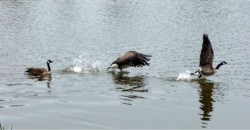
This goose chose the wrong place to try to stake a nesting territory and got run out of town by the resident pair!
Phase 2: Patrol and Hold Territory
Once a pair has picked a neighborhood, they need to hold their territory against other pairs of geese and other waterfowl while also avoiding the attention of predators. The female will also check out potential spots to place her nest. During Phase 2, a goose’s instincts are driving several key behaviors:
- Patrolling regularly for competition from other birds
- Fighting with other geese and waterfowl to drive them out of the territory
- Surveying their territory from high vantage points (like rooftops)
- Scouting potential nesting locations
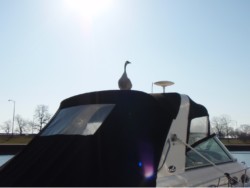
This boat seems like a good place to survey the territory!
Phase 3: Nesting
Once the female picks a spot, she will dig a shallow bowl and lay her eggs. This is where things get confusing for humans. Some places, like muskrat mounds, seem like a sensible spot to nest. They are surrounded by water that creates a barrier for predators like coyotes and foxes. Other choices are harder to understand. They’re strange or full of apparent risks. But the thing is, female geese aren’t thinking about what’s going to happen once the eggs hatch. She’s only looking for what seems like a safe place to sit and incubate her eggs. During Phase 3, a female goose is looking for:
- An area safe from land predators. This means off the ground, in the middle of water on a mound or island, or somewhere with some cover where she can easily escape to water: an area she can see well from, but not easily be seen.
- Somewhere with some protection against the wind where she can tuck herself in or put her back against a barrier. Corners are a favorite.
- An area with little predator and scavenger traffic. Humans tend to exclude predators and scavengers from their territories, so being near human dwellings or parking lots can seem like a safe place where coyotes, foxes, raccoons and other predators won’t bother momma goose.
- Some form of substrate she can dig into a shallow bowl.
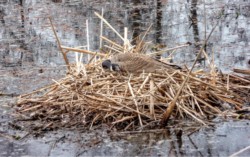
This goose picked a natural, smart location for her nest: safe from land predators, with 360-degree visibility and cover she can use to duck down and camouflage herself.
Phase 4: Defense of the Nest and Incubation
After the first egg is laid in the nest bowl, everything changes. Hormones shift and a goose’s first priority switches to defending that egg from any potential threat, even non-predators like humans and cars.
Phases 3 and 4 are where things go wrong for some pairs of urban geese. The instincts that serve them well in their natural habitat can go a bit haywire in our city environments, leading geese to nest in odd, unsafe, or illogical places. A site that seemed safe and instinctively correct in phase 3 becomes confusing, stressful, and dangerous for both geese and the humans sharing their space.
Nesting near the entrance of a building may discourage coyotes, but now the geese are launching their defenses against shoppers just trying to hit the Easter sales. Or, what seemed like a nice, elevated and well-sheltered area may actually be inside an HVAC system on a three-story roof with only a parapet wall between geese and a drop that goslings can’t survive. That parking lot island looked like a real island but instead of safe water, it’s a dangerous spot surrounded by moving vehicles.
Here are some additional examples of nesting instincts gone wrong.
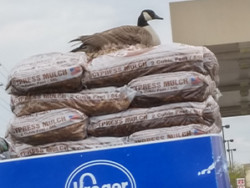
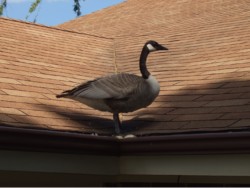
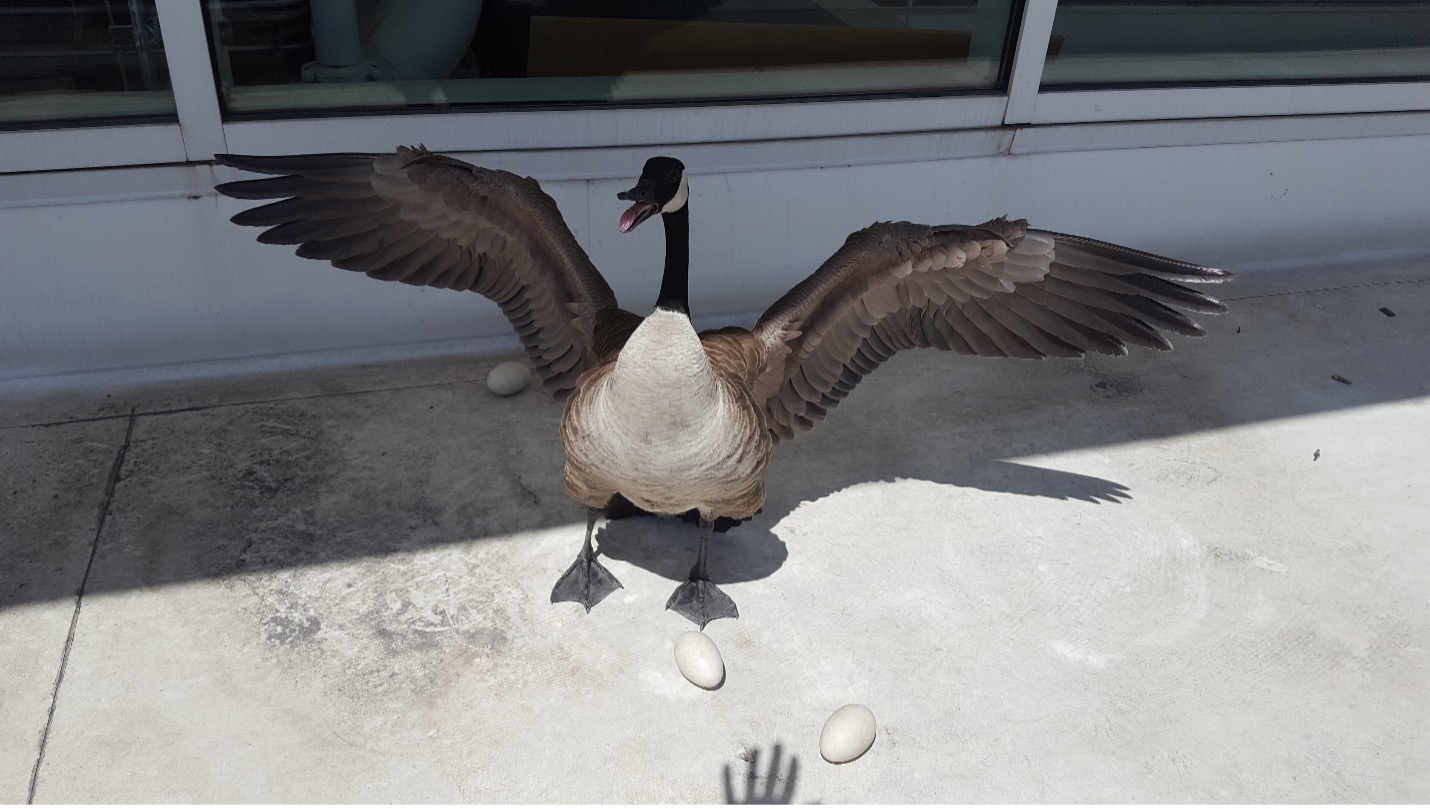
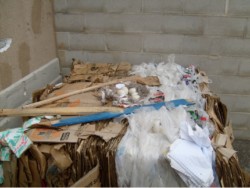

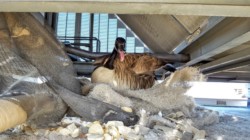
Get Help With Nesting Geese Conflicts on Your Property
When geese nest too close to humans on foot or in cars, there are safety risks for all involved. Geese are fierce in their defense of their nests and can launch powerful attacks. Don’t wait until you’ve got a bigger problem on your hands, like a slip and fall or a parking lot crash.
The professionals at Wild Goose Chase can provide experienced, knowledgeable and reliable solutions to your bird conflicts, with safe, humane and legal options for preventing and managing conflicts with Canada geese, in nesting season and year-round.
Don’t wait! Managing nesting pairs from the beginning is the best strategy. Our work starts with a careful assessment of your property and your situation to ensure a cost-effective solution.
Connect with one of our team members to learn more about the best solutions for your goose conflicts.




 0
0
